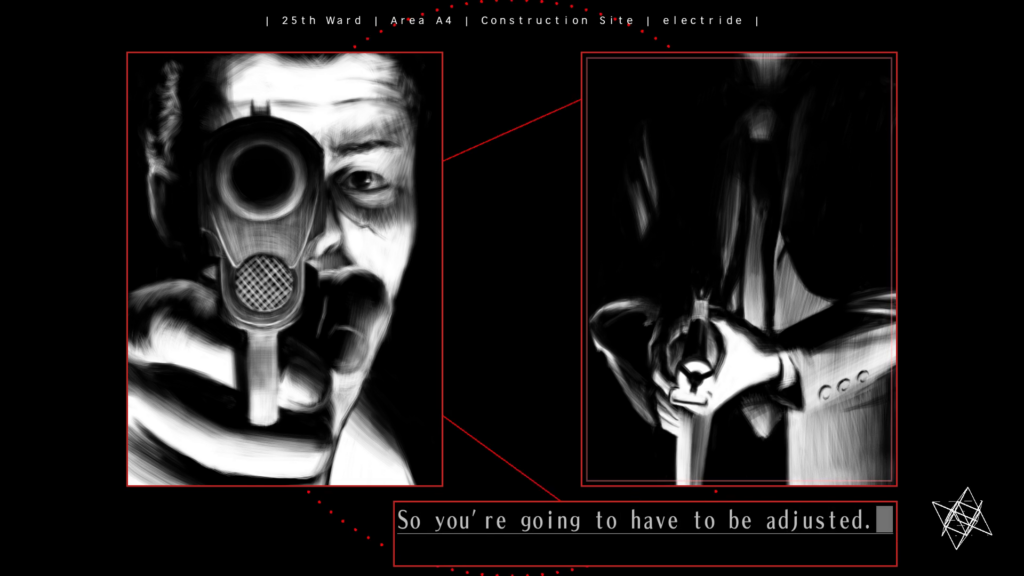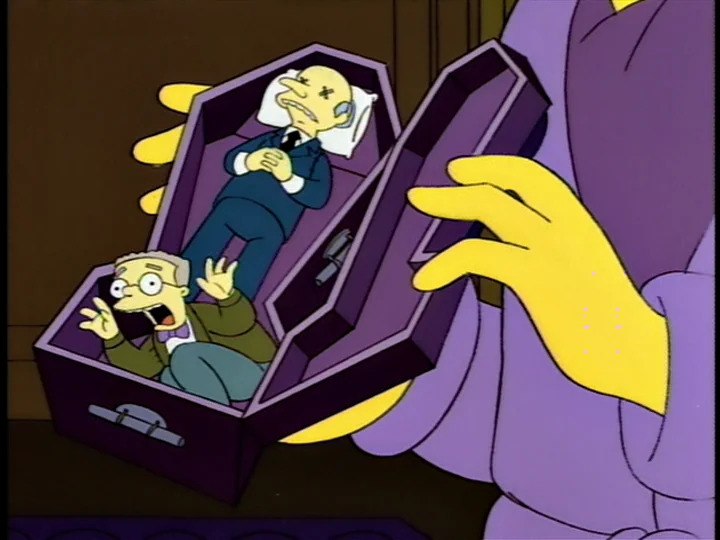The old men in The 25th Ward prove sufficiently interchangeable that both Correctness and Matchmaker end with old men or their proxies getting into battles whose conclusions the player never sees, their conflicts unresolved. Kosaka or Hatoba, Kiryu or Mikoshiba, Kipple or Kinshiro—who wins is irrelevant. Every one of these murderers is out to backstab and waste the potential of the young.

Kusabi is an exception among the old men (and forty-four isn’t really that old, but he is consistently called “old” anyway). He emerges as a hero because, paralleling and inspired by Sumio and the Mikumo Boys eliminating the old man Yukimura, his world regains color and he rejects his status as an old man to side with Kamui, the future, and his young daughter. Similarly, Morishima Tokio kills Uminosuke, defies Kipple, and ultimately escapes the power of the old men. And so, when he himself is physically an old man in 2017, Tokio becomes a supportive mentor of young people who have abilities like his.
***
Kamui/Ayame has many different meanings, inconsistent and uneven. This is because they are the symbols of Kill the Past ethos. The series is mixed, lending itself to a far-right as much as liberatory interpretation through its focus on transformative violence and unwillingness to ever wholeheartedly denounce the murderous police control it spotlights. This specific ambiguity is one of the series’ shortcomings. So what is Uehara Kamui? Is he Akira, Tokio, Shimohira, Sundance Shot, hope itself, a terrorist, a bold revolutionary, a serial killer, a fascist, an otherworldly avatar of evil, an unwitting patsy, an ageless immortal clone, a childish policeman, a cute little boy who drinks mango soda with Travis Touchdown, a spiritual being moving between hosts, the idea of revolution, or the righteous rage of the young? What exactly Kamui is depends on the specific context of the story. But more than anything, he is the rebellion against the crooked old men, by artistic, social, and especially violent means. The powers-that-be steal the light of possibility from Kamui/Ayame by treating the people like cattle. In order to pursue its species-essence in that light, Kamui/Ayame, as individuals and as information, aims to kill the past by both accepting the darkness we have already experienced and by destroying the darkness of the old men, dead and otherwise, that, to paraphrase Marx, reach out of the past like (Greg) nightmares to steal the future from the young and condemn them to that darkness of criminality, poverty, and abuse. This is why, as Sumio insists in “Parade,” the past must be killed.
While anecdotal, there seems to be a common sense among young people that possibility itself has collapsed, that nothing good will ever happen again. Mark Fisher (whatever his faults) popularized the phrase “the slow cancellation of the future.” This is not a passive waning but active murder: things do not “cancel” themselves. The sense, given form in The Silver Case, that the old sacrifice their own children in return for money is not uncommon. The actual division is not one of age but of class, and in real life focusing on age is misguided for this reason. But I have felt, and seen and heard similar from various people, that the politics of the conservative elderly are indistinguishable from active hostility to the young, of a selfish gerontocracy wanting to make a less safe, less free world.
